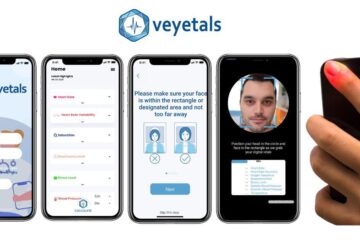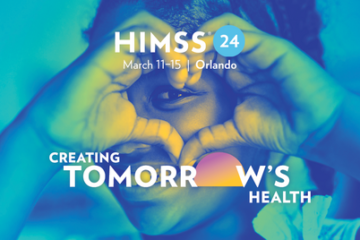Medically Reviewed By: Dr Douglas Slakey
Image Credit: Google
Table of Contents
ToggleKey Takeaways
- Revolutionizing ICU Care:
Contactless patient monitoring, driven by technologies like remote photoplethysmography (rPPG) and vital signs apps, is transforming the traditional approach to ICU care. This innovative method eliminates the discomfort associated with wires and sensors, improves patient comfort, reduces infection risks, and allows for continuous monitoring of vital signs.
- rPPG Technology as a Game-Changer:
Remote photoplethysmography (rPPG) technology, utilizing cameras and optical sensors, captures subtle changes in skin color to monitor vital signs such as heart rate and respiratory rate. Its precision and accuracy make it a reliable tool for ICU care, where immediate and accurate monitoring is crucial for patient well-being.
- Broader Applications and Future Trends:
The impact of contactless patient monitoring extends beyond ICUs to areas such as corporate wellness, with vitals apps facilitating remote monitoring of employees. As these technologies advance, incorporating artificial intelligence (AI) and machine learning, they hold the potential to predict and prevent adverse events. The future of ICU care is anticipated to be closely tied to the continued development and integration of contactless monitoring technologies, aiming to create an environment where technology acts as a silent guardian, providing real-time, actionable data for healthcare teams.
Begin your adventure
In the critical care environment of Intensive Care Units (ICUs), where every second counts and every vital sign is crucial, the advent of contactless patient monitoring is proving to be a revolutionary step. This innovative approach, powered by technologies like remote photoplethysmography (rPPG) and various vital signs apps, is transforming the way patient care is delivered in ICUs. Let’s delve into how these silent guardians are enhancing patient care.
The Emergence of Contactless Monitoring
The traditional method of monitoring patients in ICUs involves numerous wires, electrodes, and sensors attached to the patient’s body. This not only causes discomfort to patients but also poses challenges in mobility and hygiene. Enter contactless patient monitoring – a technology that uses advanced sensors and algorithms to monitor vital signs without any physical contact with the patient. This approach leverages rPPG technology, which uses light to detect blood volume changes in the microvascular bed of tissue, offering a non-invasive way to monitor vital parameters like heart rate and respiratory rate.
Advantages in ICU Care The benefits of contactless patient monitoring in ICUs are multifaceted:
Enhanced Patient Comfort: Eliminating the need for attached sensors significantly reduces discomfort for patients, especially those with burns or sensitive skin.
Reduced Risk of Infection: Fewer physical attachments mean a lower risk of skin infections, which is critical in the ICU setting.
Continuous Monitoring: Technologies like rPPG allow for continuous monitoring of vitals, ensuring immediate detection of any physiological changes.
Ease of Use for Healthcare Staff: Contactless systems simplify the process of monitoring, freeing up nurses and doctors for other critical tasks.
The Role of rPPG Technology
Remote photoplethysmography stands at the forefront of this change. Utilizing cameras and other optical sensors, rPPG technology captures minute changes in the color of the skin, which correspond to the pulse rate. This data is then processed to monitor heart rate, respiratory rate, and other vital signs. The precision and accuracy of rPPG make it highly reliable for ICU care, where accurate monitoring can be a matter of life and death.
Secure your future
Integrating Vitals Apps and Tools
The integration of vital signs apps and tools like prickless glucose monitors and prickless diabetes meters further streamlines patient care. These apps allow healthcare providers to monitor a range of parameters from a single device, enhancing the efficiency of patient care. Moreover, free vitals sign apps make it easier for smaller clinics or facilities with limited resources to adopt this advanced technology.
The Impact on Patient Outcomes
The primary aim of contactless patient monitoring is to improve patient outcomes. By providing continuous, non-invasive monitoring, these systems enable early detection of physiological changes, allowing for prompt interventions. This is particularly beneficial for critical patients who require constant observation.
Corporate Wellness and Remote Monitoring
The implications of this technology extend beyond ICUs. In the realm of corporate wellness, the use of vitals apps for remote monitoring of employees’ health is gaining traction. Companies are now leveraging these technologies to ensure the wellbeing of their staff, especially in high-stress environments.
The Future of ICU Care
Looking ahead, the future of ICU care seems increasingly intertwined with contactless monitoring technologies. As these systems become more advanced, incorporating AI and machine learning, their ability to predict and prevent adverse events will only improve. The goal is to create a healthcare environment where technology acts as a silent guardian, constantly watching over patients and providing care teams with real-time, actionable data.
Challenges and Considerations
Despite its numerous advantages, the implementation of contactless patient monitoring systems is not without challenges. There are concerns regarding data accuracy, privacy, and the need for standardization across different systems and technologies. Moreover, the reliance on technology raises questions about the potential for over-reliance and the need for robust backup systems.
Conclusion
Contactless patient monitoring, with the help of rPPG technology and various vitals monitoring tools, is a transformative approach in ICU care. It not only enhances patient comfort and safety but also improves the efficiency and effectiveness of care delivery. As we continue to embrace these technologies, it is crucial to address the accompanying challenges to fully realize their potential in improving patient outcomes. The silent guardians of healthcare, these technologies are set to redefine the landscape of ICU care, making it more humane, efficient, and effective.
Begin your adventure
MarkiTech has various subsidiaries with products and services targeted towards digital healthcare, telehealth/telemedicine, and a virtual clinic with a laser focus on helping seniors age in place and help their caregivers. Sensights.ai is a company focused on remote patient monitoring and aging solutions, which utilizes artificial intelligence to track patient’s health and keep a round-the-clock connection between caregivers and patients. Veyetals also uses rPPG and AI modeling algorithms to measure vitals anytime, anywhere to capture the light reflected by the blood vessels under a patient’s skin. Lastly, we have now launched our latest Mental Health AI Scribe tool called CliniScripts.com.



